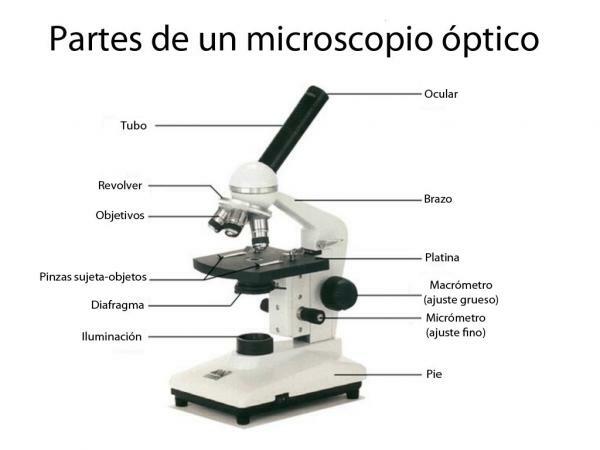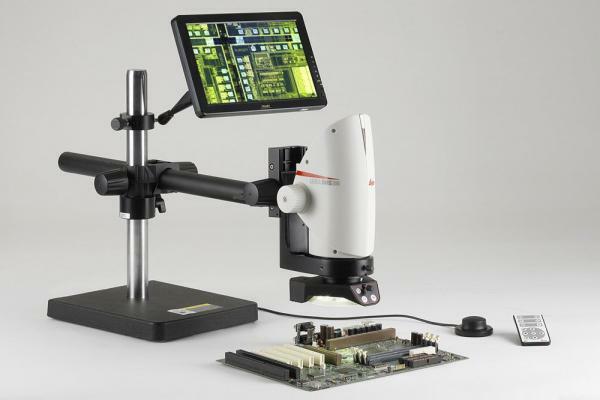Types of MICROSCOPE and their functions

Since its invention at the end of the century XVI, the microscope is a tool that has not stopped advancing and thanks to which we owe life as we know it today: without them, many of our science and technology They would not even be a shadow of what they are and even today they continue to allow us to observe smaller and smaller worlds to discover more about the reality in which we live. In a teacher we are going to show you the different types of microscope and their functions, Watch out!
From the 275 increases that Leeuwenhoek came to get with his microscope optical to UHVEM, capable of showing images with a resolution of 43 picometers (less than half the radius of most atoms). Within the different types of microscope we find the optical microscope.
We start at the origin of all magnification technology: optics. Optical microscopes were the first in history and marked a major turning point in the study of sciences such as the biology and medicine.
- They work with a system of lenses, which enlarge the image that a beam of light illuminates on the object to be studied. Currently they are much more powerful, but the physical properties of light and its diffraction mark a limit in the magnification that an optical microscope can provide, which is in the 1,500.
- An optical microscope can be simple, that is, it consists of a single lens, and therefore has a limited magnification capacity, or compound, which provides the possibility of changing the lens and with it the degree of magnification. Its name is due to the fact that the image is formed in a two-stage process: a first in which the objectives are focus directly on the sample, and the other in which the image is magnified through the system of lenses.
- Another type of light microscope is the stereoscopic. It is a type of microscope that provides little magnification capacity, but has two independent magnification mechanisms, one for each eye. Thanks to this, it is possible to perceive depth in the observed image, and therefore carry out delicate work tasks on the sample and even medical interventions.
- There is also the microscope confocal, another type of optical microscope that differs from the others in the use of its own device, the so-called pinhole. The pinhole works by eliminating much of the excess light through a narrow opening in the optical mechanism. By not reaching an excess of light to the sample, the image sharpness and contrast is also greater, although its operation significantly reduces its depth of field of work.
- The last of the types of optical microscope is the fluorescence. It works by emitting phosphorescent and fluorescent light waves, which allows us to observe some inorganic or organic components in greater detail. Its main drawback is the wear that the fluorescent lighting component suffers, giving it less durability. The scientists who developed them, Eric Betzig, William Moerner, and Stefan Hell, won the Noble Prize in Chemistry in 2014 for it.

Image: Curious
We continue to know the types of microscope and their functions to talk about the electronic microscope This represents an important advance, eliminating the limitations of magnification and resolution that the physical properties of light impose on optical microscopes.
An electron microscope does not use visible light, but uses electrons, that give rise to a digital image. The first electron microscope was developed in 1926 by Han Busch.
It has the downside that the sample must be prepared and observed in a vacuum chamber, which prevents the observation of live samples in it.

Image: Differences.eu
This type of electron microscope passes the electron beam through sample, resulting in a two-dimensional image. Its potency can vary widely, although currently the most powerful, such as the UHVEM of Hitachi in Japan, allow a resolution of 0.05 nanometers. Expanding scales and in order to get an idea of what this means, this tool would allow us to discern a chickpea on the lunar surface.
This microscope, which was the first of its kind but no longer the only one in the world, occupies an entire room by itself and, obviously, it is machinery of great sensitivity that requires facilities chords.

Image: Anditecnia
The main advantage of this microscope is that it produces a three-dimensional image of the sample, thanks to the fact that it projects its beam of electrons on the sample and observes the rebound effect of the same.
There are other electron microscopes like the tunnel effect wave scanning probe, with very specific applications in certain areas.

The last in the list of microscope types is the digital one, which has recently appeared and is clearly focused on offering a product. easy to market and suitable for all audiences. It serves an important role as an outreach tool, and works with a digital camera that sends its image to a connected monitor or device.

Image: Leica



